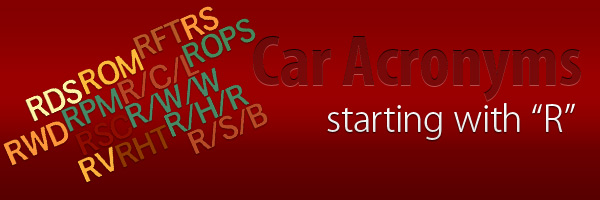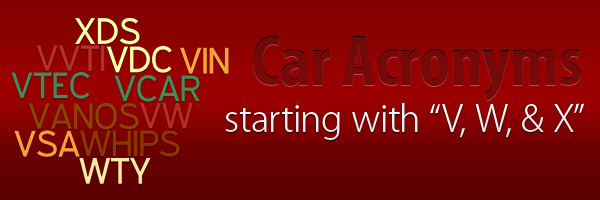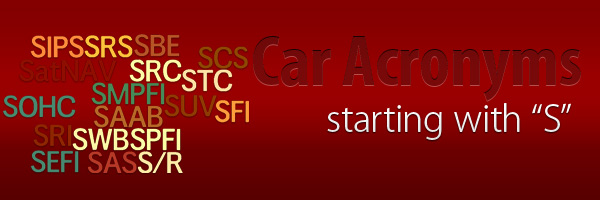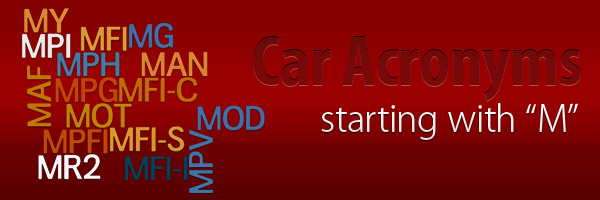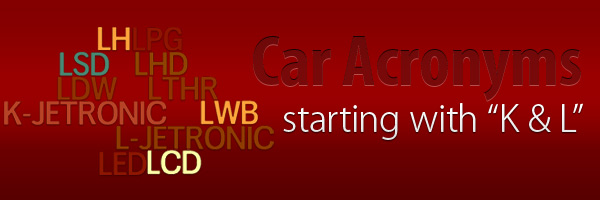R/C/L – Remote Central Locking
A remote central locking is a system by which a person can lock or unlock a vehicle with the push of a button. The main component of this system is an electric key. With this key, one can send a signal to an automobile equipped with an electronic locking system. In most cases, a beeping sound from the vehicle will indicate that the vehicle is either locked or unlocked.
RDS – Radio Data System
A radio data system is a feature in most modern automobiles that accounts for various displays. More specifically, it is the radio data system that interprets the signals to display characters on a vehicle’s control panel. When viewing the current time, the name of the radio station, and other program information (i.e. the name of a song), it is the radio data system that is making all of these features possible.
RFT – Run-flat tire
Run-flat tires are primarily known for their capability of decelerating the deflation process when punctured. These pneumatic vehicle tires can either be self-supporting, self-seating, or auxiliary-supported. Similar in design to standard automobile tires, run-flat tires allow vehicles to continue riding at reduced speeds and minimal distances.
RHD – Right-hand Drive
Right-hand drive is a traffic system that calls for all vehicles to be driven on the right side of the road. This system minimizes the risk of traffic collisions and other automobile accidents. Today, just over two-thirds of the world’s roads operate under right-hand drive. Some jurisdictions have implemented left-hand drive, and it is up to each local government to determine what system is most suitable.
R/H/R – Rear Head Restraints
Rear head restraints are cushions that are attached to the top of a back seat in an automobile. The purpose of this cushion is to prevent severe damage to an occupant’s head in the case of a traffic accident. Rear head restraints were mandated in the 1960s and today are responsible for limiting the damage from injury due to whiplash.
ROM – Read-Only Memory
ROM, or read-only memory, is a type of storage medium that is found in computers and other electronic devices. This storage medium is unique in the sense that it cannot be modified. It is primarily used with software development since end users usually do not need to make any changes to the data when receiving it. Today, ROM is used to store both programs and data.
ROPS – Rollover Protection System
A rollover protection system is a feature integrated in automobiles that prevents any type of sudden fall due to rapid acceleration. This system works collectively with the anti-lock braking, traction control, and yaw control. The rollover protection system is triggered when a vehicle either makes a quick lateral movement or comes into contact with a surface (i.e. a rock or a curb) that causes an unexpected deviation in direction. To prevent damage to the vehicle and injury to the passengers, brakes are activated as soon as the system is activated.
RPM – Revolutions Per Minute
RPM, or revolutions per minute, typically refers to the number of complete spins made by an object over a sixty-second interval. It is a measure of frequency that accounts for the rotational speed of an object moving around a fixed axis. Specific to automobiles, RPM is used to measure both the revolutions around an engine’s belt and the rotations of a tire around a fixed axis. There are significant implications of RPM, as its measurement is critical to the effectiveness of a transmission system in a vehicle.
RS – Restraint System or Rotational Speed Sensor
A restraint system is made up of the complete set of components in an automobile that are designed to prevent injury. The main components of a restraint system are seat belts and air bags. Seat belts are considered active restraints since they require action by an occupant, whereas air bags are passive restraints since they are triggered automatically.
R/S/B – Rear Seat Belts
Rear seat belts are devices that are part of a vehicle’s safety restraint system. These devices contain two connecting pieces that form a belt and serve to reduce the risk of injury in the case of sudden impact. Seat belts are known to be one of the most effective preventative measures of injury and have been enforced by law enforcement agencies since 1970.
RSC – Run-Flat System Component
A run-flat system component is a feature available in contemporary automobiles that allows for a driver to continue operating a motor vehicle even when a tire begins to deflate. Modern technology has made it possible to travel at a rate of approximately fifty miles-per-hour when using run-flat tires. These run-flat tires are considered the most critical of the numerous emergency-running properties that manufacturers integrate in vehicles today.
RSC – Roll Stability Control
Roll stability control is a relatively new feature built into today’s automobiles that prevents a driver from losing control of his or her vehicle. This technology can detect a loss of steering control and assist the driver in operating a vehicle in adverse conditions (i.e. snow, ice. rain). Once activated, the roll stability control activates the brake system on each individual tire as needed to help the occupant steer the vehicle safely.
RV – Recreational Vehicle
Recreational vehicle is the common phrase used to describe a large automobile or trailer. These vehicles are designed for those looking to turn their vehicle into a portable home. In most cases, a recreational vehicle is large enough to contain a bathroom, kitchen, and bedroom. Some use recreational vehicles for long trips whereas others consider them permanent homes.
RWD – Rear-Wheel Drive
This type of layout typically consists of an automobile with the engine located on the front end and the driven tires located on the back end. In other words, the tires that are actually “driven” are the two that are located at the back-end of the vehicle. Specifically, this type of layout is referred to as front engine, rear-wheel drive. However, the engine can also be located in the middle or back of the vehicle as well (this layout is not common). Rear-wheel drive has recently been replaced by front-wheel drive since front-wheel drive is known to bring about more efficient driving.
R/W/W – Rear Wash Wipe
This feature is included on all automobiles manufactured today and helps remove any dirt or debris that accumulates on the rear window. A rear wash wiping system typically consists of a blade (or set of blades) and a pumping system. The pumping system sprays the rear window while the blade wipes in a back-and-forth direction. Given that the rear wheels are located close to a vehicle’s rear bumper, it is inevitable that dirt and debris build up on a rear window, making a rear-wash wiping system extremely beneficial.

